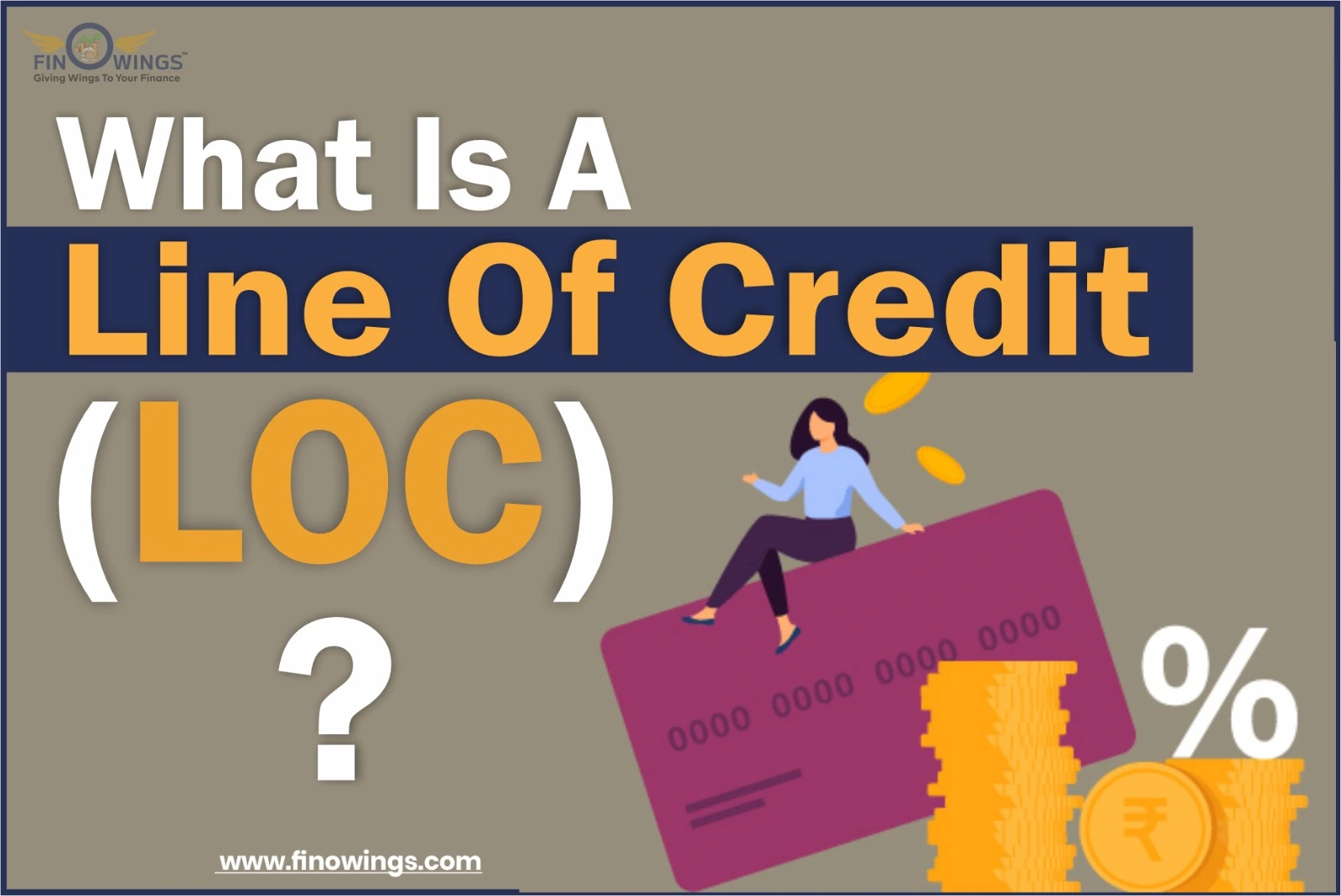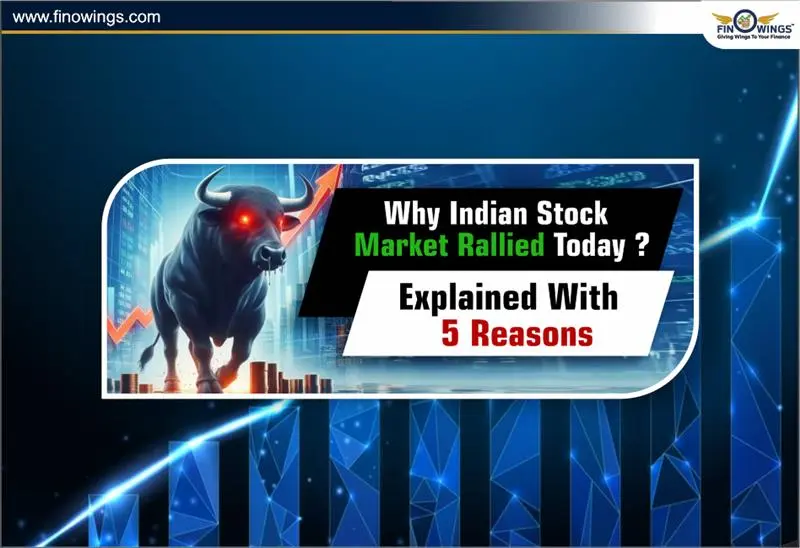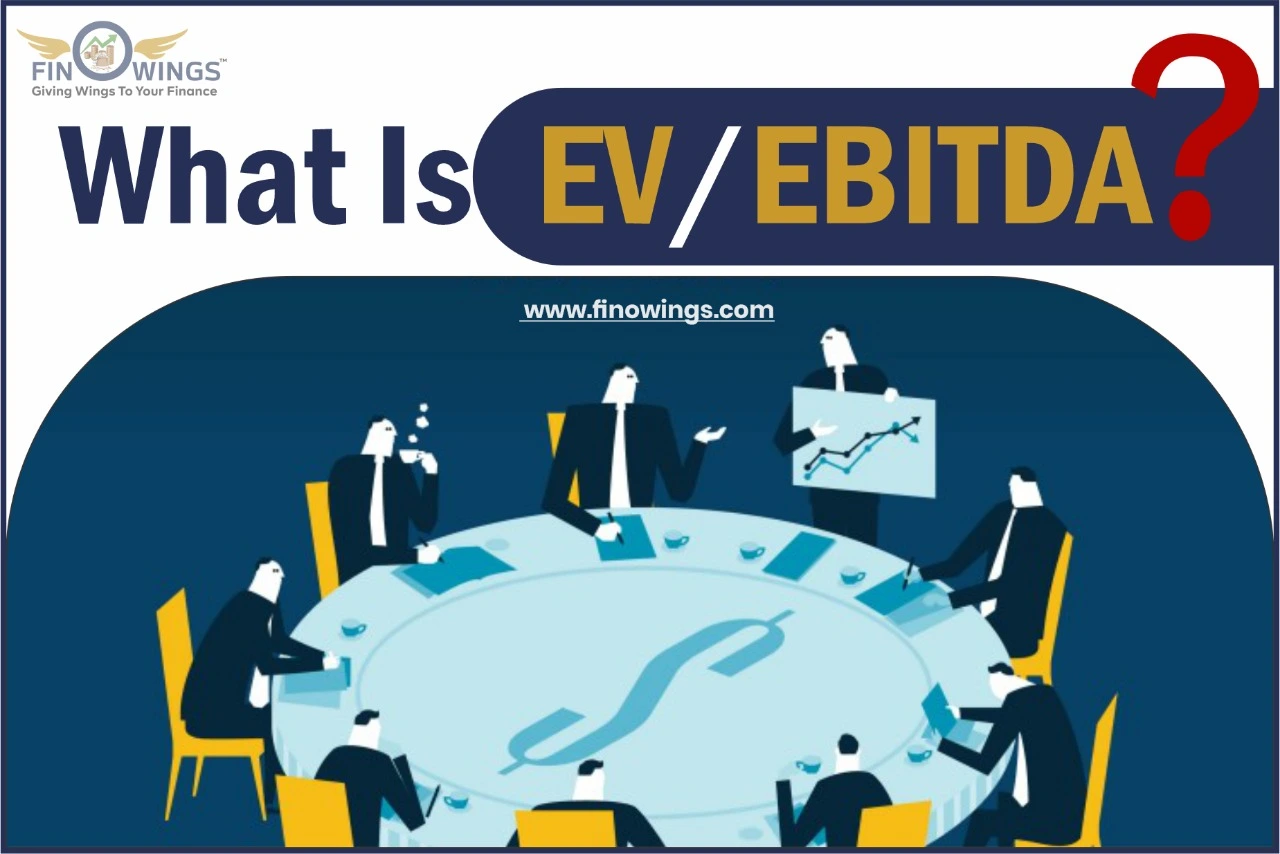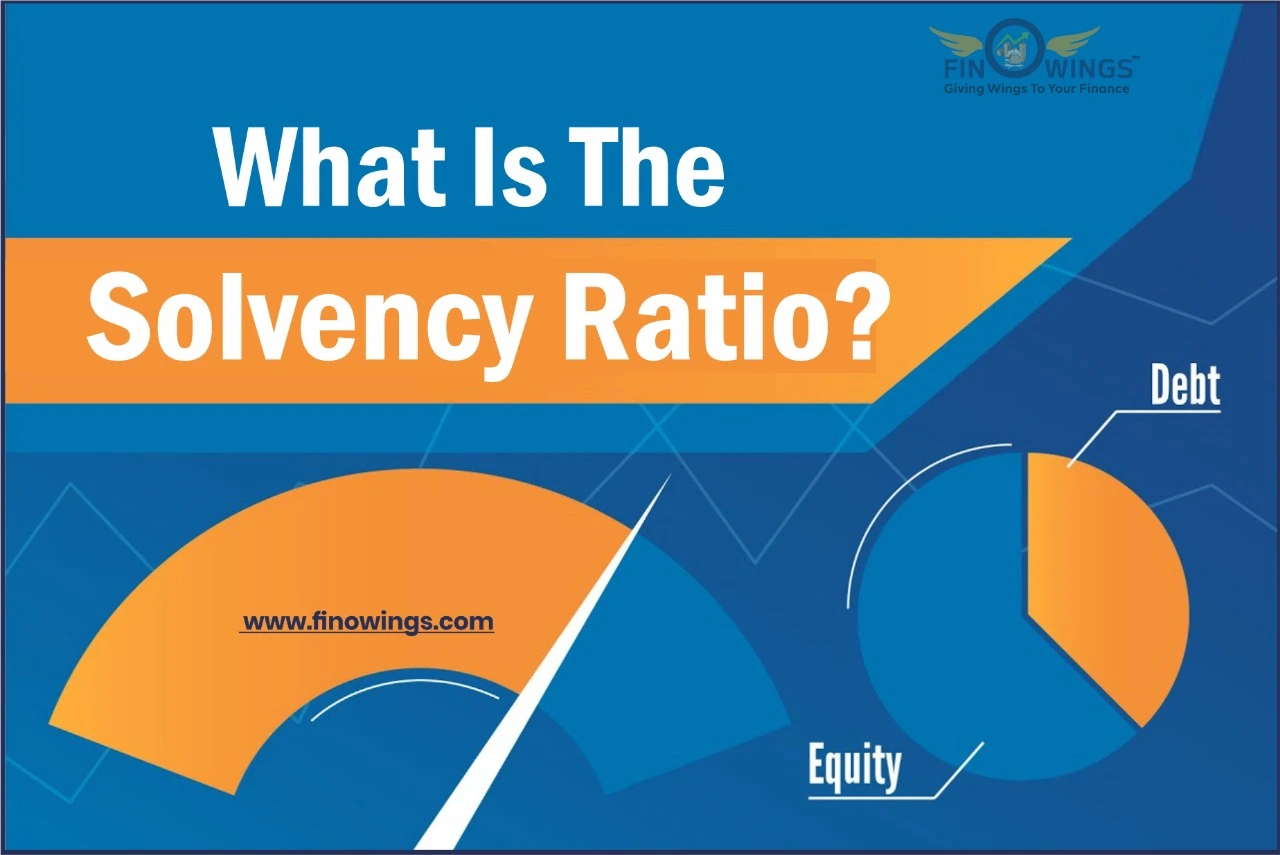Home >> Blog >> What is Line of Credit & Rule of Spending it in the right way?
What is Line of Credit & Rule of Spending it in the right way?

Table of Contents
- Introduction
- Types of Lines of Credit
- Uses of LOC
- Overdraft protection programs given by banks now include personal lines of credit
- Revolving vs. Non-Revolving Lines of Credit
- Is LOC similar to a Credit card?
- How to Select the Right Bank for a Line of Credit?
- What is the LOC's repayment process?
- How Do You Track Your Credit Line?
- Tips to Maximize the Benefits of LOC
- How Can a Line of Credit Enhance People's Lives in India?
- Conclusion
Introduction
A line of credit (LOC) is a predetermined borrowing amount that may be accessed whenever necessary. Until the cap is reached, the Borrower can withdraw money as needed. In the event of an open line of credit, money can be borrowed once more as it is repaid.
A LOC is a contract between a financial institution—typically a bank—and the customer establishing the maximum loan amount that can be borrowed. The Borrower may only draw funds from the LOC up to the maximum amount (or credit limit) specified in the Agreement.
Every LOC contains a set amount of money that can be borrowed, returned, and repeated as necessary. The lender determines the interest rate, the number of installments, and other guidelines. Some LOCs let you use a type of credit or debit card, while others let you write checks (or draughts). Compared to secured LOCs, unsecured LOCs frequently have higher interest rates (which are supported by collateral).
A LOC's key benefit is that it is flexible by nature. Borrowers can request a specific amount but are not required to utilize it all. Instead, individuals can adjust their LOC expenditure to suit their requirements, paying interest only on the money they really use rather than the total credit line. Additionally, borrowers have the flexibility to change their repayment amounts based on their cash flow or budget. For instance, they can pay the total balance due all at once or just the required minimum each month.
Types of Lines of Credit
LOCs can take many different forms, and each one can be classified as either secured or unsecured. Beyond that, each kind of LOC has unique qualities.
1. Personal Line of Credit
This makes it possible to borrow, pay back, and borrow again unsecured monies. An unblemished credit history, a credit score of at least 670, and a steady income are often necessary to open a personal LOC. Although collateral is not necessary for a personal LOC, having money and collateral in the form of stocks or certificates of deposit (CDs) both help. Personal LOCs are used for unexpected expenses, special occasions like weddings and other celebrations, overdraft protection, travel and entertainment, and to enable people with variable incomes to get through rough patches.
2. Home Equity Line of Credit (HELOC)
The most popular kind of secured LOC is a HELOC. The home's market value is less than the amount due, which serves as the foundation for figuring out the size of the LOC, and serves as security for a HELOC. The credit limit is often equivalent to 75% or 80% of the home's market value, less the mortgage balance outstanding.
A draw term, which is typically 10 years long, is a feature of HELOCs that allows borrowers to access available funds, pay them back, and then borrow again. The remaining debt is due following the draw period, or a loan is extended to cover the remaining sum over time. In addition, closing fees for HELOCs frequently include the price of an appraisal on the asset pledged as security.
3. Business Line of Credit
Businesses can utilize these to borrow money as needed rather than obtaining a fixed loan. Before issuing a LOC, the financial institution that is extending it evaluates the company's market value, profitability, and level of risk. Depending on the required size of the LOC and the findings of the examination, the LOC may be secured or unsecured. The interest rate varies, as it does with practically all LOCs.
4. Demand Line of Credit
Although rarely used, this type can be either secured or unsecured. With a demand LOC, the lender has the right to demand repayment at any time. Depending on the LOC's terms, repayment (up until the loan is called) may be either interest-only or interest + principle. In addition, the Borrower may use the credit limit at any moment.
5. Securities-Backed Line of Credit (SBLOC)
The securities of the Borrower are used as collateral for this specific secured-demand LOC. An SBLOC usually permits the Borrower to take out a loan for 50% to 95% of the assets in their account.
SBLOCs are non-purpose loans; hence the Borrower is not permitted to utilize the funds for securities trading or purchases. However, almost any other kind of expense is acceptable.
SBLOCs call for the Borrower to make regular, interest-only payments until the loan is fully repaid or the brokerage or bank makes a demand for payment, which may occur if the investor's portfolio value drops below the LOC's ceiling.
Uses of LOC
Although lines of credit can be used to purchase products for which a bank might not typically underwrite a loan, lines of credit are generally not intended to be used to support one-time purchases such as houses or cars. Instead, mortgages and auto loans are intended for these purposes. Individual lines of credit are frequently used to finance projects where it may be challenging to determine the precise amount of funding required in advance or to finance the same basic purpose as corporate lines of credit: to smooth out the fluctuations of unpredictable monthly income and expenses.
Think of a self-employed person whose monthly revenue is erratic or who encounters a considerable, frequently unpredictable wait between completing the work and receiving payment. While the mentioned person might typically use credit cards to deal with cash flow issues, a line of credit may be a more affordable option (it often has lower interest rates) and provides more flexible repayment options.
In conclusion, lines of credit can be helpful in circumstances requiring substantial cash deposits, such as weddings, where there will be recurring cash outlays but the amounts may not be known in advance, or the merchants may not accept credit cards. Similar to loans, lines of credit were frequently used to finance renovation or home improvement projects during the housing boom. People would commonly seek a mortgage to purchase the home and a line of credit at the same time to assist in paying for any necessary upgrades or repairs.
Overdraft protection programs given by banks now include personal lines of credit
Even though not all banks are particularly willing to market overdraft protection as a loan product ("It's a service, not a loan!"), many overdraft protection programs are funded by personal lines of credit.
This is another example of how a line of credit can be used to easily and immediately obtain emergency funds.
Advantages:
The borrowers can benefit greatly from LOCs. Following is a list of some of them:
-
Banks charge a lower interest rate on LOCs than they do on conventional loans.
-
In contrast to the standard loan process, where the Borrower cannot obtain an amount smaller than the minimum amount stipulated by the relevant bank, the line of credit system allows the Borrower to accept very small amounts.
-
Only the portion of the credit limit that the Borrower has utilized is subject to interest charges. There will be no interest charged to the Borrower on the remaining sum.
-
LOC is quite helpful for self-employed people because they can take the money in smaller amounts and start their firm with no risk.
-
This gives business owners mental peace since they know they have a sizeable sum of money in the bank that they can access at any time if needed.
-
Because of the high-interest rates charged on personal loans, people who don't want to take out one can easily choose a LOC and still satisfy their demands.
-
When you choose a line of credit instead of a regular loan, you may anticipate a much higher credit limit.
Limitations:
-
LOCs without collateral are subject to higher interest rates and credit criteria.
-
Almost always variable, LOC interest rates range substantially from one lender to another.
-
Unlike credit cards, LOCs do not offer the same level of regulatory protection. There may be severe consequences for making late payments and exceeding the LOC limit.
-
An open LOC may encourage overspending, which makes it difficult to make payments.
-
LOC misuse can lower a borrower's credit rating. Depending on the severity, using the services of a reputable credit repair business may be worthwhile.
Unsecured vs. Secured LOCs
LOCs are often unsecured loans. This indicates that the Borrower does not pledge any collateral to the lender to support the LOC. One prominent exception is a home equity line of credit, which is secured by the Borrower's residence. Secured LOCs appeal to lenders because they give them a mechanism to recover the monies advanced in the case of non-payment.
Secured LOCs appeal to people or business owners because they frequently have greater maximum credit limits and much cheaper interest rates than unsecured LOCs. However, unsecured LOCs are considerably more challenging to obtain and may have higher credit requirements. By restricting the amount of money that can be borrowed and raising interest rates, lenders try to offset the increased risk. The high annual percentage rate (APR) on credit cards is partly due to this.
The credit limit—the maximum amount you are permitted to charge on the card—represents the parameters of unsecured LOCs, which are essentially credit cards. However, you do not commit any assets when you open the card account. Therefore, there is nothing that the credit card company can seize as compensation if you start to miss payments.
Revolving vs. Non-Revolving Lines of Credit
An open-end credit account commonly referred to as a revolving account, is frequently considered a sort of LOC. With this arrangement, borrowers are able to spend money, pay it back, and then spend it again in an almost endless cycle. However, installment loans like mortgages and auto loans are different from revolving accounts like LOCs and credit cards.
Installment loans allow borrowers to borrow a certain sum of money and pay it back in set monthly installments until the loan is repaid in full. Consumers who have paid off an installment loan cannot use the money again unless they qualify for a new loan.
The characteristics of revolving credit are shared by non-revolving LOCs (or revolving LOC). There is a set credit limit, flexibility in how the money is utilized, regular interest rates, and the ability to make payments whenever you choose. The available pool of available credit does not restock once payments are made, which is a significant exception. The account is closed after the LOC is fully repaid and cannot be used again.
For instance, banks occasionally offer personal LOCs as an overdraft safety net. A customer of a bank can register for an overdraft plan that is connected to their checking account. The overdraft prevents the consumer from bouncing a check or having a purchase declined if they go over their checking balance. Of course, an overdraft must be repaid with interest, just like any LOC.
Is LOC similar to a Credit card?
Lines of credit, like credit cards, effectively have set borrowing limits; you can only be approved for a certain amount of money. Additionally, the lender's specific procedures for exceeding that limit differ; however, banks are frequently reluctant to rapidly accept overages than credit cards are (instead, they often look to renegotiate the line of credit and increase the limit of borrowing).
The loan is essentially preapproved, just like with cards, and the Borrower can use the funds whenever they like for any purpose. Finally, despite the possibility of annual fees, neither credit cards nor lines of credit impose interest charges until a balance is owed.
In contrast to credit cards, lines of credit may be collateralized by real estate. Home equity lines of credit were very well-liked by borrowers and loan officers prior to the housing meltdown. It is also known as HELOCs. Although HELOCs are currently more difficult to obtain, they are still available and typically have cheaper interest rates. Credit cards will always require minimum monthly payments, and businesses will drastically raise the interest rate if those payments are not made. There might or might not be a comparable need for immediate monthly repayment with lines of credit.
How to Select the Right Bank for a Line of Credit?
In India, a number of institutions offer lines of credit to their clients. Before making any final decisions as a borrower, you must understand their terms and conditions. Compare the interest rates offered by all reputable institutions and visit each to learn about hidden terms. Use online resources to determine each bank's interest rate, then pick the one with the lowest rate to reap the most rewards. Additionally, you should confirm whether the bank offers draught protection.
What is the LOC's repayment process?
The LOC repayment process is identical to the credit card repayment process. There will be a due date for repayment once you have used a portion of your loan's credit limit. In the interim, if you require additional cash before the original loan is repaid, you can easily obtain it.
Assume that you have a LOC of Rs. 1 lakh and withdraw Rs. 20,000; you will only be required to pay interest on Rs. 20,000 and not on Rs. 1 lakh. After you borrow Rs. 20,000, a deadline for simple EMI (Interest + Principal amount) repayment will be established. The total interest will be imposed on Rs. 70,000, which you must repay within the predetermined duration if you need another Rs. 50,000.
How Do You Track Your Credit Line?
With the help of the bank's monthly statement, you may easily track your LOC. The bank can send you a statement in a number of ways. Still, in this paperless banking era, banks typically prefer to deliver e-statements to the registered email address you provided. Always review your statement each month or every three months, depending on the mode you choose, to maintain track of the same. Check the remaining balance before you apply for any new loans because you must pay off any past-due debt before applying for a new one. Contact the bank executives immediately if you are confused about receiving all the information by calling the bank's customer service phone.
Tips to Maximize the Benefits of LOC
The best thing to do if you want to maximize the use of your credit line is to be upstanding and prepare ahead. Always keep in mind that you borrowed money, which must be paid back with interest. To get the most out of your LOC, consider the following points:
-
Make a thoughtful plan in advance and decide how you're going to use the funds.
-
Avoid taking out new loans before paying off the ones you already have because doing so could put you in debt.
-
It would be preferable if you could refrain from using your credit card until you fully repay the loan.
-
To avoid skipping your future EMIs, always factor in both your current and upcoming expenses.
-
Keep a sizable portion of your monthly budget set aside to make prompt EMI payments, even for only one month.
-
If you have taken out a secured loan, keep in mind that you risk losing the valued asset if you don't pay back the full amount plus interest on time.
-
To learn how to use the money effectively, speak with a financial advisor or bank staff.
-
Do not worry if you do not feel comfortable with the monthly EMI repayment arrangement. Choose a quarterly payment instead.
-
Never use the approved funds to fulfill your extravagant desires, such as taking a trip abroad or purchasing a car, as this sort of careless spending can put you in a lot of debt.
-
Always strive to pay more than the required minimum. The bank will add additional interest to the EMI from your previous month if you carry over your payments to the next month. While the bank will undoubtedly benefit from this, you will experience tension.
How Can a Line of Credit Enhance People's Lives in India?
A line of credit, often known as a LOC, can be quite advantageous for self-employed people or company professionals who have an erratic monthly income. Banks typically look down on those with erratic monthly income and don't think they qualify for loans. LOC is a lifesaver for those who require ongoing financial support throughout the year. The Borrower may withdraw the amount required to satisfy the immediate demand after the loan is granted. The finest part of this approach is that regardless of how much was authorized for him or her, the customer will only be charged for the quantity that was really consumed. In addition, the Borrower's ability to choose the payback duration and conveniently pay back the loan amount and monthly interest would make repayment simpler for them.
People in India with meager or erratic incomes can greatly benefit from LOC. These organizations require a steady stream of funding to support occasions or necessities like family marriage, children's education, home development, etc. In these circumstances, it might be challenging for borrowers to initially identify how much money they desire because the required amount is unpredictable. As a result, they are free to withdraw any sum from the permitted credit limit. In addition to this flexibility, the Borrower can use other advantages, including reduced interest rates compared to regular bank loans. In addition to this flexibility, the Borrower can use other advantages including reduced interest rates compared to regular bank loans. LOC will undoubtedly significantly alter people's lives if it reaches all societal segments.
Briefly stated, a line of credit is a borrowing system that, when used wisely, can assist you in meeting all of your financial needs. So choose it to maximize your Line of Credit earnings while minimizing stress.
Conclusion
Like any financial product, lines of credit are neither intrinsically good nor negative. It all depends on how they are applied. On the one hand, using credit cards excessively to make purchases can put someone in financial problems just as easily. On the other hand, lines of credit can be an affordable way to deal with the unpredictable nature of monthly finances or carry out a major transaction like a wedding or house renovation. Like with any loan, borrowers should carefully review the conditions (especially the costs, interest rate, and repayment schedule), compare rates, and ask as many questions as necessary before agreeing.

















